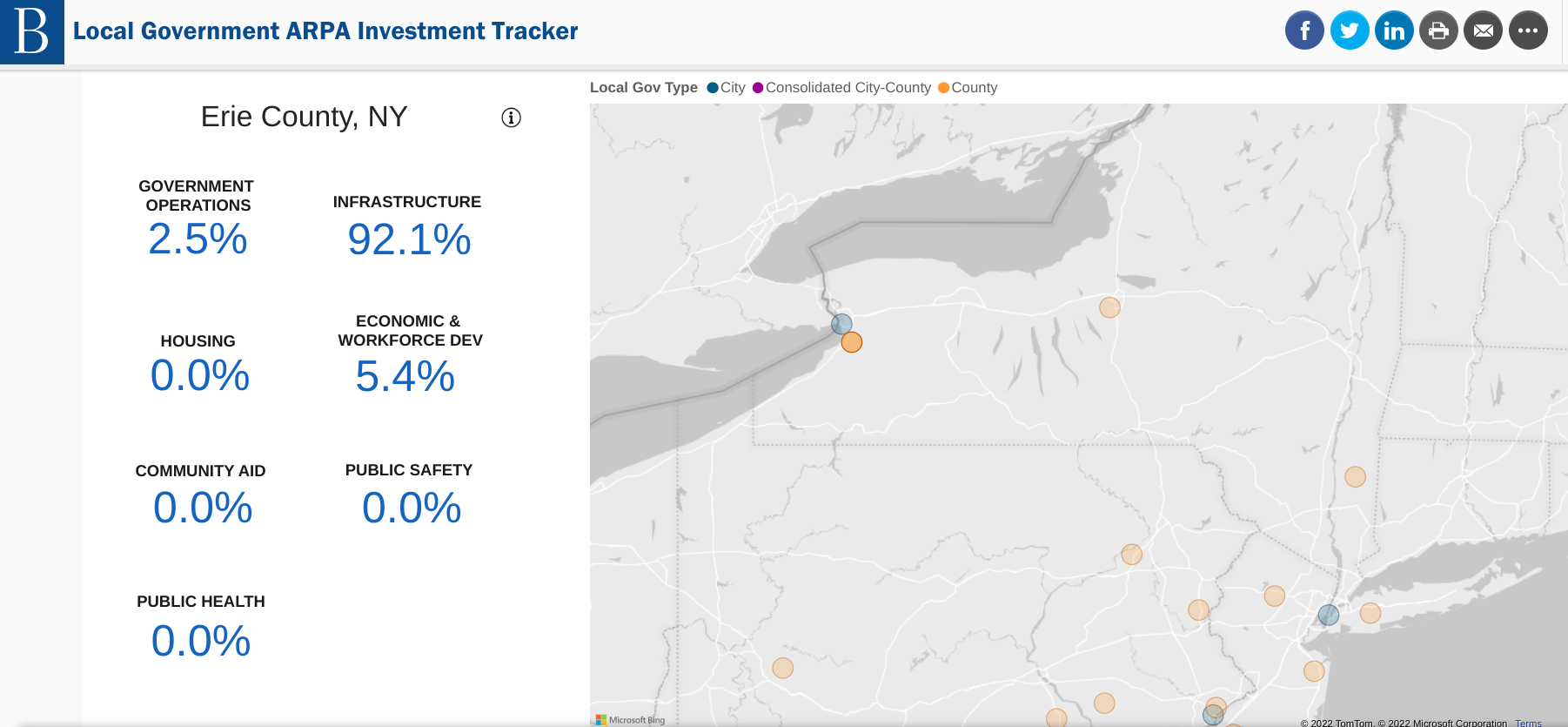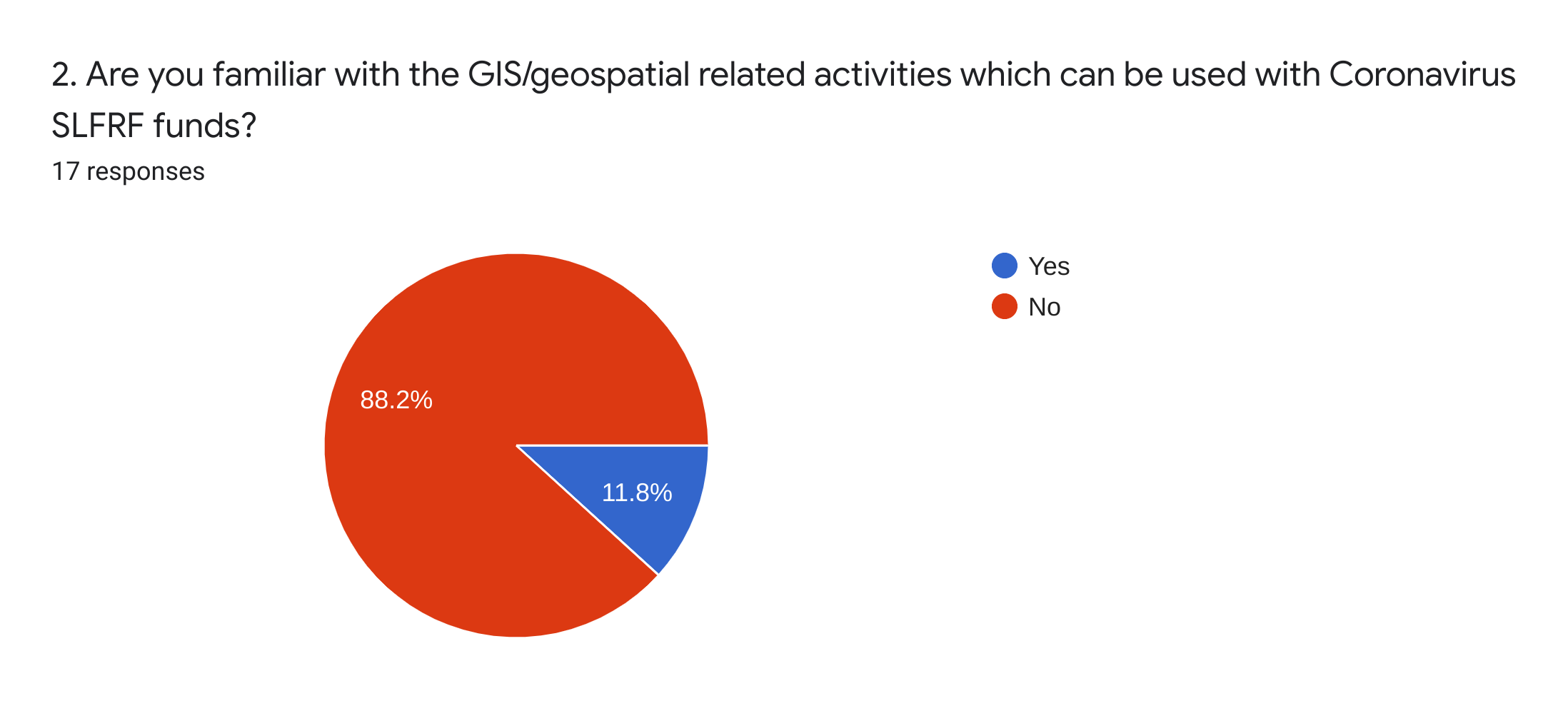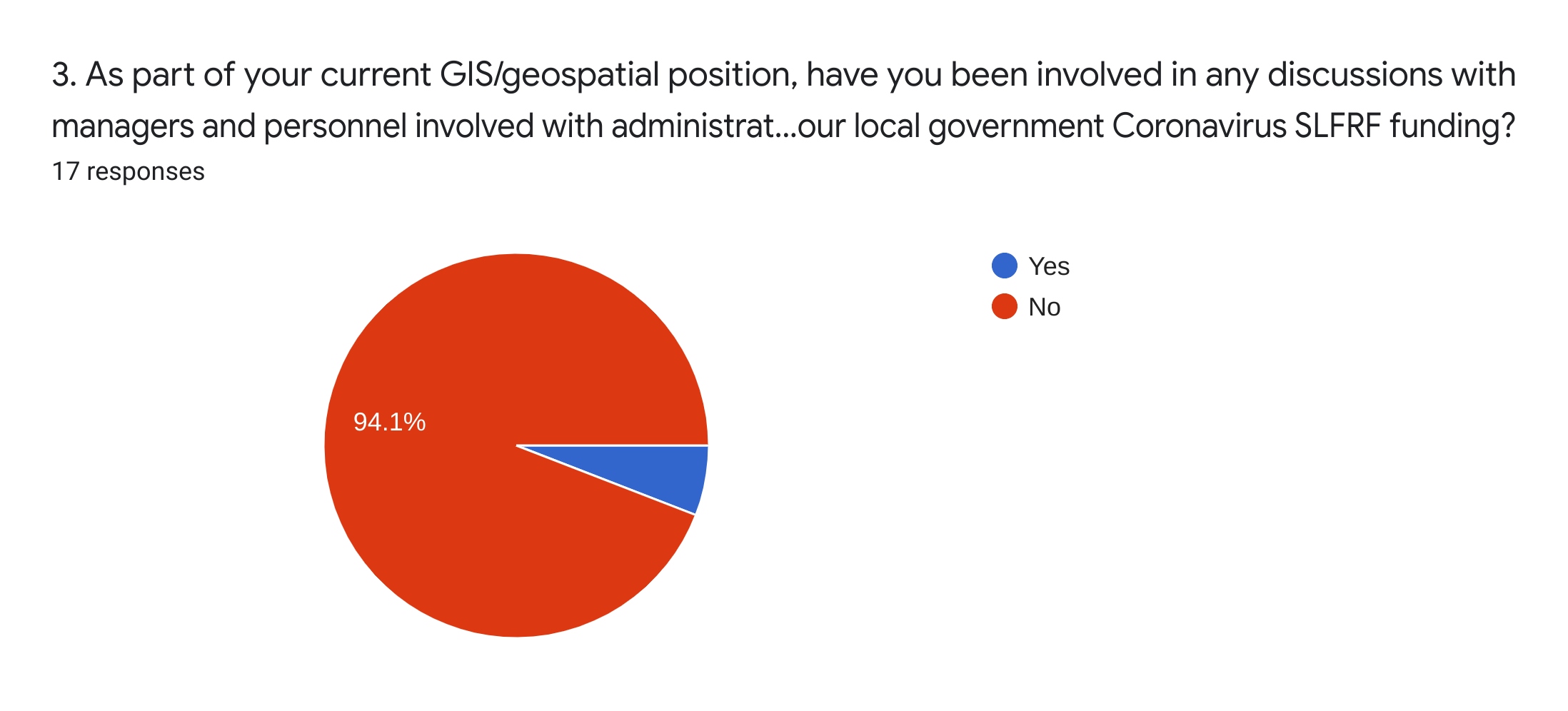There's lots of money out there. But few in the GIS community seem to be talking about it
During the waning months of my service with Westchester County last fall, I began to see references and documentation connecting geospatial technology to Coronavirus State and Local Fiscal Recovery Funds (SLFRF) program which was enabled as part of the American Rescue Plan Act (ARPA) passed earlier in 2021. Earmarked monies for each government in New York State. This was followed by passage of the Infrastructure Investment and Jobs Act (IIJA) passed in November 2021. In general, SLFRF funding is more directed to local governments and IIJA funding being more focused on state government appropriations. The progams certainly haven’t gone unnoticed by GIS software companies such as ESRI and Cartegraph which have published documentation outlining how specific categories of ARPA funding can be used to support local government geospatial activities. Even Autodesk, the AutoCAD giant, has recognized the relevance and importance of these landmark funding programs.
Empire State organizations such as the New York State Association of Towns (NYTOWNS), New York State Association of Counties (NYSAC) and the New York State Conference of Mayors and Municipal Officials (NYCOM) which represent the many levels of local governments across the state are also busy tracking funding allocations and keeping their own scorecards. For example there is NYCOM’s Municipal ARPA Plans and Programs inventory, NYTOWNS procurement guide, and NYSAC’s county-level breakdown of funding And there’s more. The U.S Treasury Department’s Allocation for Metropolitan Cities or the Brookings Local Government ARPA Investment Tracker. Your county or municipality may have yet to make the connection to these geospatial opportunities.

The Brookings ARPA Investment Tracker is one of several sites monitoring the use of grant funds. Erie County’s use of the funding is highlighted here with 92% of the funding being used for infrastructure purposes. Other New York State government interim reports can be found here.
But even with all of this publicly available information, and aggressive marketing by the vendor community, there seems to be a limited amount discussion about how these major federal grant funding programs can be woven into local geospatial initiatives. And this is unfortunate because its very clear there ARE local activities which are “ARPA eligible” in the areas such infrastructure management, economic development, health and human services delivery, housing, transportation and community revitalization to name only a few. So who is leading the statewide local government ARPA geospatial discussion?
Diving a little deeper, I took out attempting to survey the statewide local government geospatial community on the ARPA and IIJA programs by issuing a simple survey via the NYS GIS listserv, as well as having a link put on the NYS GIS Assocation’s website (thank you, Association webmasters). Perhaps I would have gotten a better response to the survey offering links to both of the funding programs, but instead, wanted to capture the respondent’s immediate understanding/awareness of the programs when opening the survey. Providing links to the programs would have defeated the purpose of the survey. And I made it clear the survey was only for New York State local government users and/or their contractors. That takes a lot of potential respondents off the table via the listserv and with local government representation in the Association hovering around less than 25% of the total membership, I wasn’t sure what the response would be. Though not included in the images below, I emailed a handful of former county colleagues separately ahead of the online survey which resulted in very similar results.



Unfortunately, as historically been the case, the top level NYS government associations noted above have rarely made GIS/geospatial a visible and outward facing part of their agenda. Even today, Its hard to find anything really meaningful for the local government GIS community when using keyword searchs such as “GIS, geospatial, or mapping” on any of their websites. And its highly doubtful there will be, or can be, any real meaningful advocacy through any state program offices as this political or elected official outreach framework doesn’t even exist on behalf of local government GIS programs. As the next generation of local government GIS/geospatial programs evolve, particularly in the urban environments where the focus will be more on the public infrastructure, utilities, sustainability and climate change impacts, large scale and high resolution mapping and surveying – the collective internet of things (IoT) – discussions and geospatial strategies with most state government offices in this space will become more distant. Geospatial programs for different levels of government in New York State evolving in completely different directions. Albeit for sure New York City is on a different level when is comes to infrastructure and underground mapping, but it’s Underground Infrastructure Project concept does represent an important direction of the next generation of local government GIS programs in urban areas across the state. It’s just a matter of degree.
The list below, from an ESRI publication and is available on numerous websites, highlights the local government programs in play. No, not necessarily direct funding to your GIS office, but does serve as a roadmap of who GIS practioners should be talking with at the local level. EcoDev, public health, infrastructure and public works, and cooperative efforts with utilities. And then find out who is administering your government’s ARPA funding. You can be assured someone or some agency has dibs on the funding. And apparently the GIS programs are only visible in the rearview mirrow.
4. Invest in water, sewer, and broadband infrastructure, making necessary investments to improve access to clean drinking water, support vital wastewater and stormwater infrastructure, and to expand access to broadband internet
Within these overall categories, recipients have broad flexibility to decide how best to use this funding to meet the needs of their communities
While actually securing funding is much easier said than done, often requiring great grant and proposal writing skills as well as involving many individual offices and agendas in the organization. But the almost complete lack of even a discussion by the statewide local government GIS/geospatial community to date seems amiss.
There are so few funding opportunities such as these 2021 federal grant programs to take advantage of. These are generational programs. Right now the onus of finding representation and advocacy for local government GIS funding in the federal grants arena falls squarely on local government GIS leaders and their representatives. As well as local GIS practitioners.
